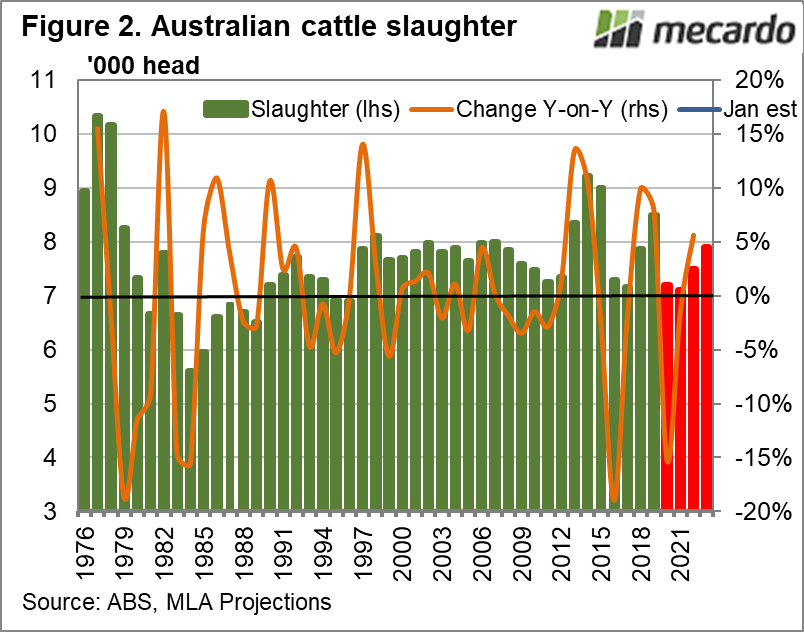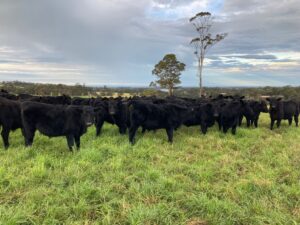Meat and Livestock Australia (MLA) released their cattle industry projections last week, and while it was before the rain, the herd and slaughter numbers are still worth looking at. There are no surprises, with new two decade lows forecast for the herd and slaughter.
MLA’s projections were completed before the big rains hit the east coast, and as such they might need a little adjusting, with the herd maybe finding a little support, and slaughter possibly being even lower than projected.
The estimated final figure for the 2019 herd, which was for the 30th of June, was itself a 23 year low, and down 6.6% on 2018. We have seen very strong cattle slaughter, and especially female slaughter for the last seven months, and this has MLA pegging the June 30 2020 herd at 24.7 million head. The decline in 2020 is expected to be a slightly smaller 5.8%, but it still puts the herd at its lowest level since 1994 (figure 1).
The recent rain could see somewhat of a reprieve for the herd, with fewer females likely to flow to processors over the coming months. With the herd already at a low, it’s unlikely it could remain much higher than 25 million head, but it should find a base this year.
Cattle slaughter is forecast to take a large hit, falling 15% in 2020, and further in 2021 to 7.2 and 7.1 million head respectively. Figure 2 shows we have seen cattle slaughter at similar levels as recently as 2017, when it hit 7.15 million head. In 2017 the herd was at nearly 28 million head, so it a forecast for 2020 and 2021 of similar slaughter, with a herd 3 million head lower, looks a little optimistic.
With the recently received rain it is feasible cattle slaughter could move below 7 million head for the first time since 1996. The lower slaughter goes, the stronger the herd rebuild, and obviously much depends on seasonal conditions from here. If the rain continues, we could see the herd rebound a bit quicker than expected.
What does it mean?
Based on current conditions, it is reasonable to assume cattle supply is going to decline this year, and in coming years, with the question being by how much. With current strong demand, it probably doesn’t matter how much cattle supply falls, as prices are likely to reach new records regardless of how many cattle are available.
The pace of the rebuild will govern how long strong prices last, but according to MLA’s projections, supply will be tight for at least three years.
Have any questions or comments?
Key Points
- MLA’s Cattle Industry Projections were released last week with over 20 year lows expected for herd and slaughter.
- Recent rain could see weaker slaughter and a quicker herd rebuild.
- Current strong prices are here to stay, with very tight supply for the coming years.
Click on graph to expand
Click on graph to expand
Data sources: ABS, MLA, Mecardo













